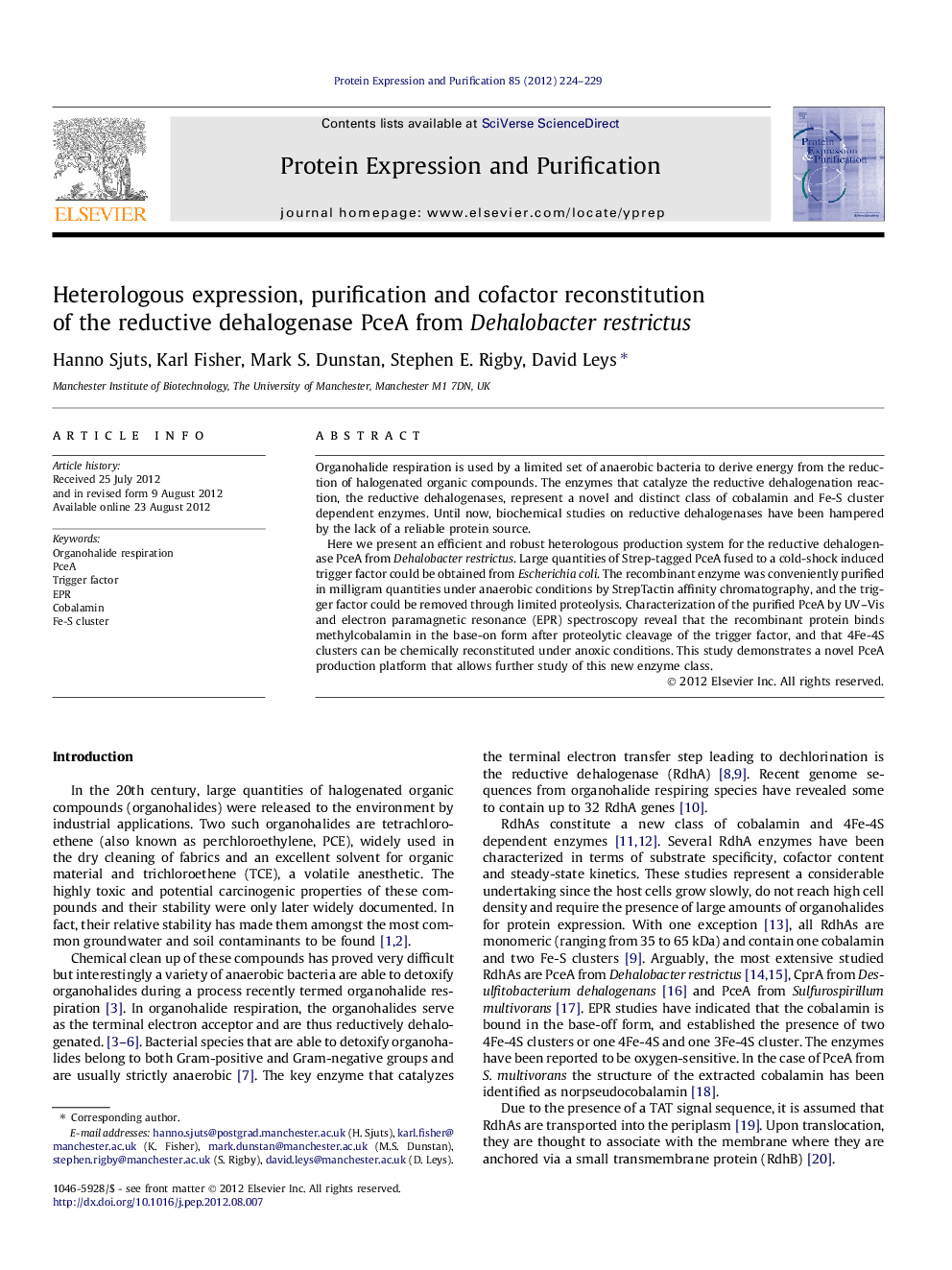| Article ID | Journal | Published Year | Pages | File Type |
|---|---|---|---|---|
| 2020577 | Protein Expression and Purification | 2012 | 6 Pages |
Organohalide respiration is used by a limited set of anaerobic bacteria to derive energy from the reduction of halogenated organic compounds. The enzymes that catalyze the reductive dehalogenation reaction, the reductive dehalogenases, represent a novel and distinct class of cobalamin and Fe-S cluster dependent enzymes. Until now, biochemical studies on reductive dehalogenases have been hampered by the lack of a reliable protein source.Here we present an efficient and robust heterologous production system for the reductive dehalogenase PceA from Dehalobacter restrictus. Large quantities of Strep-tagged PceA fused to a cold-shock induced trigger factor could be obtained from Escherichia coli. The recombinant enzyme was conveniently purified in milligram quantities under anaerobic conditions by StrepTactin affinity chromatography, and the trigger factor could be removed through limited proteolysis. Characterization of the purified PceA by UV–Vis and electron paramagnetic resonance (EPR) spectroscopy reveal that the recombinant protein binds methylcobalamin in the base-on form after proteolytic cleavage of the trigger factor, and that 4Fe-4S clusters can be chemically reconstituted under anoxic conditions. This study demonstrates a novel PceA production platform that allows further study of this new enzyme class.
► Heterologous expression of the 4Fe-4S and cobalamin containing reductive dehalogenase PceA. ► Fusion to trigger factor chaperone is required for soluble expression of PceA. ► Reconstitution of the 4Fe-4S clusters achieved in vitro and confirmed by EPR. ► PceA binds cobalamin only after proteolytic removal of the trigger factor domain.
